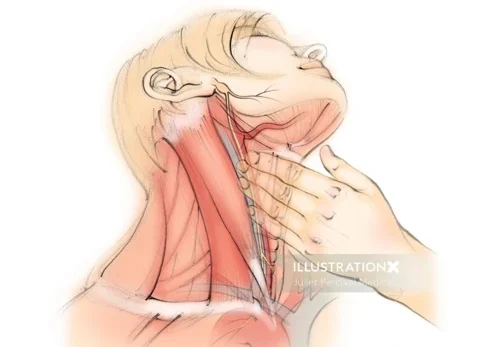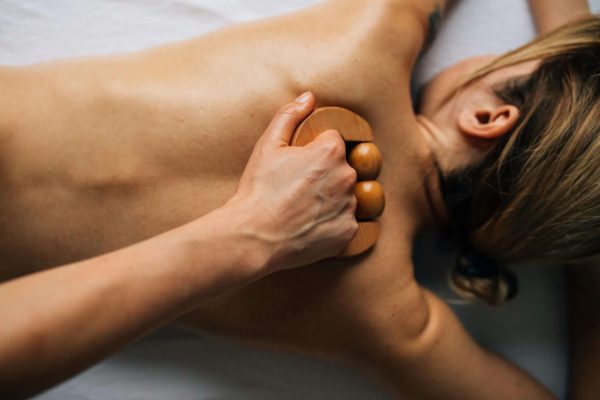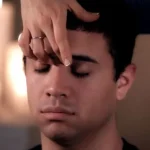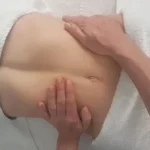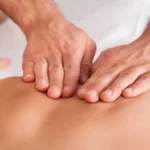What Is Carotid Sinus Massage?
Imagine being able to slow down a racing heartbeat with just a gentle touch. That’s exactly what Carotid Sinus Massage (CSM) does—a specialized medical technique where light pressure is applied to the carotid sinus, a small but crucial area in the neck. This procedure is used to help regulate heart rhythms, diagnose certain cardiac conditions, and, in some cases, even assist in restoring normal heart function.
But while it may seem simple, CSM is a precise medical maneuver that requires caution and expertise. In this article, we’ll explore how it works, when it’s used, and why it’s not suitable for everyone. Let’s take a closer look at this fascinating technique.

How Carotid Sinus Massage Works
The carotid sinus is a pressure-sensitive area located where the carotid artery branches in the neck. It plays a key role in regulating blood pressure and heart rate by sending signals to the vagus nerve, which slows down the heart. According to ScienceDirect, stimulating this reflex can be used to assess autonomic function and diagnose cardiovascular conditions (ScienceDirect).
When a trained medical professional gently massages this area, it triggers a reflex that can:
✅ Lower heart rate – Helpful for diagnosing or stopping certain fast heart rhythms.
✅ Reduce blood pressure – Can identify people with carotid sinus hypersensitivity.
✅ Provide diagnostic insights – Helps doctors figure out what’s causing dizziness or fainting spells.
Real-Life Case Study: How CSM Changed a Patient’s Life
John, a 65-year-old man, had been experiencing frequent dizziness and fainting episodes. He underwent multiple tests, but doctors couldn’t find the cause. Finally, during a cardiology visit, his doctor performed a carotid sinus massage to see if his symptoms were linked to Carotid Sinus Hypersensitivity (CSH). Within seconds of the massage, John’s heart rate slowed significantly, confirming the diagnosis.
With this information, his doctor adjusted his medication and recommended lifestyle changes, such as avoiding tight collars and sudden head movements. Since then, John has had fewer fainting spells and improved quality of life. This real-life example highlights the power of CSM as a diagnostic tool.

Why and When Is Carotid Sinus Massage Used?
CSM is primarily used for two key reasons: diagnostics and treatment.
1. Diagnosing the Cause of Unexplained Fainting (Syncope)
Have you ever felt lightheaded or fainted without a clear reason? Some people have a condition called Carotid Sinus Hypersensitivity (CSH), where their carotid sinus overreacts to pressure (like a tight shirt collar or shaving). CSM can help diagnose this condition by checking if applying pressure causes a major drop in heart rate or blood pressure (PubMed).
2. Slowing or Stopping Certain Fast Heart Rhythms (Tachycardia)
For some types of supraventricular tachycardia (SVT)—a condition where the heart beats too fast—CSM can help slow things down. It increases vagal tone, which slows down electrical signals in the heart, restoring a normal rhythm (ScienceDirect).
Is Carotid Sinus Massage Safe?
While CSM is a powerful tool, it’s not for everyone. Since the carotid arteries supply blood to the brain, this maneuver should only be done by medical professionals—never try it yourself!
Who Should Avoid CSM?
🚫 People with carotid artery disease (plaque buildup can increase stroke risk).
🚫 Anyone who has had a recent stroke or transient ischemic attack (TIA).
🚫 Patients with carotid bruits (abnormal sounds in the artery, a sign of blockage).
Possible Risks:
⚠️ Temporary dizziness or lightheadedness.
⚠️ A sudden drop in blood pressure (leading to fainting in some cases).
⚠️ Rare but serious complications like stroke (if performed incorrectly) (PubMed).
Alternative Ways to Slow a Fast Heart Rate
Since CSM isn’t for everyone, doctors often recommend safer alternatives for slowing a racing heart, such as:
- Valsalva Maneuver – Holding your breath and straining (like during a bowel movement).
- Cold Water Face Immersion – Dunking your face in ice water (activates the dive reflex).
- Coughing or Bearing Down – Stimulating the vagus nerve manually.
FAQ: Common Questions About Carotid Sinus Massage
Can I Perform Carotid Sinus Massage at Home?
No. CSM should only be done by trained medical professionals due to potential risks like stroke or severe drops in blood pressure.
How Long Should Carotid Sinus Massage Last?
Doctors typically apply pressure for about 5-10 seconds while monitoring the patient’s response.
Does Carotid Sinus Massage Work for All Types of Fast Heartbeats?
No. CSM is primarily effective for supraventricular tachycardia (SVT) but not for all arrhythmias.
Is CSM Painful?
Not usually. Patients may feel mild discomfort or lightheadedness during the procedure, but it should not be painful.

Final Thoughts
Carotid Sinus Massage is a fascinating example of how the human body can be controlled through simple reflexes. While it’s an effective tool for diagnosing and treating certain heart rhythm issues, it’s not something to try at home. If you experience frequent dizziness, fainting, or a racing heart, consult a doctor—they can determine whether CSM or other treatments are right for you.
Key Takeaways
- CSM is a powerful yet simple technique used in cardiology.
- It helps diagnose syncope and slow down certain fast heart rhythms.
- Only trained professionals should perform it to avoid serious risks.
- There are safer alternatives for managing a rapid heartbeat.
References:
Got a heart health question? Leave a comment below or share this article with someone who might find it useful!
⚠️ Disclaimer:
This article is for informational purposes only and does not constitute medical advice. Always consult with a licensed healthcare provider or certified massage therapist before beginning any new treatment, especially if you have pre-existing health conditions or concerns.

